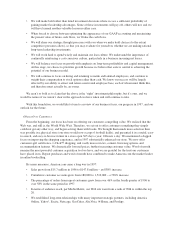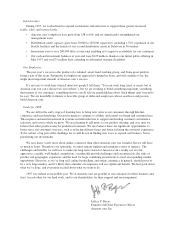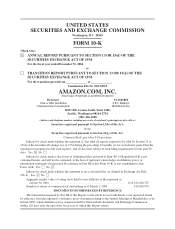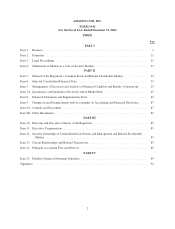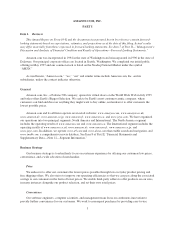Amazon.com 2004 Annual Report Download - page 17
Download and view the complete annual report
Please find page 17 of the 2004 Amazon.com annual report below. You can navigate through the pages in the report by either clicking on the pages listed below, or by using the keyword search tool below to find specific information within the annual report.•foreign exchange rate fluctuations, particularly as international sales become an increasingly larger
contributor to our revenues;
•our ability to acquire merchandise, manage inventory, and fulfill orders;
•the introduction by our current or future competitors of websites, products, services, price decreases, or
improvements;
•changes in usage of the Internet and e-commerce, including in non-U.S. markets;
•timing, effectiveness, and costs of upgrades and developments in our systems and infrastructure;
•the effects of commercial agreements and strategic alliances and our ability to successfully implement
the underlying relationships and integrate them into our business;
•the effects of acquisitions, and other business combinations and our ability to successfully integrate
them into our business;
•the success of our geographic and product line expansions;
•technical difficulties, system downtime, or interruptions;
•variations in the mix of products and services we sell;
•variations in our level of merchandise and vendor returns;
•disruptions in service by shipping carriers;
•the extent to which we offer free shipping, continue to reduce product prices worldwide, and provide
additional benefits to our customers which reduce our gross or operating profits;
•the extent we invest in technology and content, fulfillment, marketing and other expense categories;
•the extent to which we provide for and pay taxes; and
•anincrease in the prices of fuel and gasoline, which are used in the transportation of packages, as well
as an increase in the prices of other energy products, primarily natural gas and electricity, and
commodities like paper and packing supplies, all of which are used in our operating facilities.
Finally, both seasonal fluctuations in Internet usage and traditional retail seasonality are likely to affect our
business. Internet usage generally slows during the summer months, and sales in almost all of our product
groups, particularly toys and electronics, usually increase significantly in the fourth calendar quarter of each year.
We May Not Be Successful in Our Efforts to Expand into International Market Segments
Our international activities have become increasingly significant to our revenues and profits and we plan,
over time, to continue to expand our reach in international market segments. We have relatively little experience
in purchasing, marketing, and distributing products or services for these market segments and may not benefit
from any first-to-market advantages. It is costly to establish international facilities and operations, promote our
brand internationally and develop localized websites, stores, and other systems. We may not succeed in these
efforts. Our net sales from international market segments may not offset the expense of establishing and
maintaining the related operations and, therefore, these operations may not be profitable on a sustained basis.
Our international sales and related operations are subject to a number of risks inherent in selling abroad,
including, but not limited to, risks with respect to:
•foreign exchange rate fluctuations;
•local economic and political conditions;
•restrictive governmental actions (such as trade protection measures, including export duties and quotas
and custom duties and tariffs) and restrictions on the level of foreign ownership;
9


